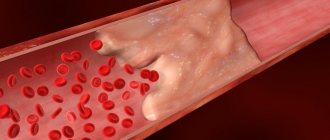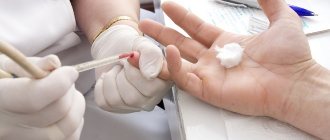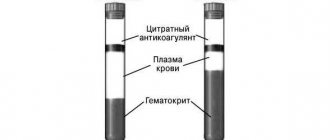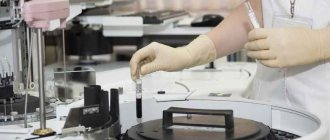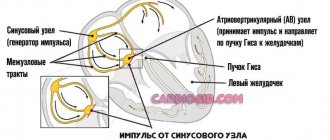A microstroke is a pinpoint injury to the structure of the brain. They mean a tiny cerebral hemorrhage. Unfortunately, due to the fact that it is not large in scale and is practically invisible, patients rarely give it due importance and do not go to the hospital.
Symptoms rarely make themselves felt longer than 24 hours. After this, it goes away on its own, and it is very easy to attribute it to fatigue, weather dependence or similar phenomena. Moreover, at subsequent scheduled visits to a neurologist, if you do not report the incident, it is impossible to identify signs of a microstroke in women.
The Yusupov Hospital welcomes specialists of the highest category, doctors and candidates of medical sciences, whose specialization is pathology of the nervous system. They resort to innovative methods, including neuroimaging. This method combines several techniques, thanks to which it is possible to assess the functions, structure and biochemical characteristics of the brain. Thus, it is possible to use equipment to record which areas are already damaged and which are at risk of necrosis in the future.
The difference between a stroke and a microstroke
The clinical pictures for ischemic stroke and microstroke are similar, but differ in scale. Doctors distinguish two forms of stroke. In one version, a heart attack occurs: a section of the brain dies due to disruption of blood flow in the brain due to a blockage of a vessel. In the second situation, the death of part of the brain structures occurs due to the rupture of one of the arteries.
Unlike ischemic stroke, with a microstroke a very small area dies. Symptoms of stroke and mini-stroke differ in women, so if they do not know how this disease progresses, they may ignore health changes. If you miss the initial warning signs, then one attack on your feet can lead to a series of repeated ones.
Expert opinion
Author: Polina Yuryevna Vakhromeeva
Neurologist
A microstroke manifests itself in the form of neurological disorders, the nature of which depends on the area of the brain affected. In general, attacks of minor and major strokes are similar. Possible manifestations: numbness of half the face, inability to smile, acute headache and dizziness, nausea and vomiting, loss of coordination.
After an attack of a micro-stroke, patients do not always immediately feel a deterioration in their general condition. Symptoms regress within 24 hours, and the neurological deficit is completely leveled. However, without follow-up therapy, the risk of a recurrent attack increases significantly. Treatment must be provided immediately and in full.
Depending on the cause of the stroke, drug therapy is prescribed individually for each patient. According to indications, vasodilating, antihypertensive, thrombolytic, decongestant and nootropic drugs are used. You cannot start taking medications on your own, since without an accurate diagnosis it is impossible to predict the effect of the therapy used. Doctors at the Yusupov Hospital Neurology Clinic conduct an examination and prescribe adequate treatment based on MRI diagnostics.
Causes of female microstroke
The risk group includes people who have previously been diagnosed with:
- hypertension;
- arrhythmia;
- diabetes;
- thrombosis.
Most often, patients with abnormalities in the functioning of the cardiovascular system experience microstroke. In this case, you should not expose yourself to extreme physical activity. Additional risk factors are alcohol abuse, smoking and drug use. They provoke a pressure drop, followed by a spasm of cerebral vessels.
One of the risk factors for developing this disease is obesity. In combination with an addiction to fatty and spicy foods, excess weight negatively affects the condition of blood vessels.
Before taking hormonal contraceptives, it is important to obtain an appropriate prescription from a gynecologist. If you use oral contraception without regard to test results and other indicators, there is a possibility of causing circulatory problems.
First signs
It is important to know how a microstroke manifests itself in women so as not to miss its onset. Not everyone takes severe headaches seriously, but tries to cope with it on their own and uses painkillers. Analgesics do not help with painful sensations if their source lies in vascular pathology. In this situation, the pain appears and disappears throughout the day, as well as the feeling of nausea along with dizziness.
Migraines progress in a very similar way, and patients often reassure themselves that nothing terrible is happening to them. What an attack and a migraine have in common is that the victim reacts poorly to bright lights and loud sounds. However, signs of a microstroke in women also appear as follows:
- numbness of the limbs;
- speech difficulties;
- inability to control facial expressions;
- fainting.
Headache during a microstroke is often accompanied by poor coordination of movements, weakness, increased sweating and chills. Often, along with this, patients are bothered by discomfort in the heart area and high blood pressure.
The distinctive symptoms of a microstroke in older women are a serious decrease in cognitive abilities and sudden onset of vision problems. It should also be understood that in old age there is a high probability of relapse. In this regard, the most dangerous are the first three days after an attack: the overwhelming number of relapses occur during this period.
To understand how to recognize a micro-stroke in women, you should remember that the symptoms appear almost simultaneously, but last no longer than 24 hours. It is important to know that the signs of stroke and micro-stroke in women are similar. As a rule, after a sharp deterioration in health, everything seems to return to normal. But even if you feel that everything is fine, it is important to play it safe and see a doctor who can tell you for sure whether everything is fine.
Procedures and operations
Treatment tactics depend on the degree of narrowing of the carotid arteries. Patients with severe (above 70%) stenosis of the carotid artery due to atherosclerosis are referred to a vascular surgeon for the purpose of stenting or carotid endarterectomy . Moreover, carotid endarterectomy should be performed within the first week after a microstroke. This tactic can reduce the risk of stroke and prevent disability and even death of the patient.
With a lesser degree of narrowing, surgery is used if the patient has already had transient disorders or strokes. Endarterectomy is the removal of cholesterol deposits from the wall of the carotid artery. This is a critical vascular operation in which the error is difficult to correct. During the operation, an incision is made in the neck area, the carotid artery is exposed and clamped. Endarterectomy begins with the common carotid artery, moving to the internal carotid artery. An incision in the artery is made along the outer surface 2.0 cm proximal to the plaque and ends behind the end of the plaque.
During the operation, the plaque with the intima and media is separated along the entire circumference of the artery and circularly intersected. To remove the plaque, use a flat, thin spatula. After removing the plaque, the patency of the artery is checked with a bougie and pieces of intima are removed. After endarterectomy from the external carotid artery, the same is done on the internal carotid artery. The arterial incision is closed with a patch. Auto-vein or synthetic material is used for the patch. At the end of the operation, test bleeding is performed from all arteries (external, common and internal carotid) before applying the final suture. Then the clamps are removed from the arteries in a certain order: first from the internal, from the external, and then from the common carotid. The subcutaneous muscle is sutured and sutures are placed on the skin.
Symptoms of microstroke in women
A microstroke is periodically accompanied by nonspecific symptoms that indicate not only this disease. However, their appearance is a reason to immediately check your health.
Cerebral hypertensive crisis
During a crisis, blood pressure rises to high levels in an extremely short time. With such a significant difference, blood supply to parts of the brain is disrupted. A sharp jump is caused by various reasons, including excessive physical activity, abuse of bad habits, severe stress or overwork. In the event of a crisis, you should make an appointment for examination as soon as possible.
The main characteristic of a crisis is a sharp and significant increase in pressure in a very short time.
Suspicion of cerebral hypertensive crisis is diagnosed if the systolic (“upper”) pressure exceeds 180 mm Hg. Art., and diastolic (“lower”) overcomes the mark of 100-120 mm Hg. Art. Hypertensive patients easily ignore such a change, however, sudden changes in such a short period of time are not considered normal and are a good reason for going to a medical facility.
Transient ischemic attack
Transient ischemic attack (TIA) is a temporary acute disturbance of blood circulation in the brain. As a rule, it goes away within 24 hours. One of the most common symptoms of transient ischemic attack is visual disturbances. The patient temporarily suffers from the fact that he begins to see worse, stops seeing altogether, or loses this ability in one of the eyes. It is possible that vision loss is associated only with the upper or lower half of the visual field. Often, visual distortions last only a few seconds, but are repeated several times in one day.
Also, a transient ischemic attack affects the functioning of the vestibular apparatus. Some patients note unsteadiness of their own gait, dizziness, and instability.
Occasionally, TIA causes amnesia due to loss of short-term memory. In this case, memories of the past are retained, but the last few minutes or hours are completely lost from memory. As a rule, information about these events is returned within 24 hours.
Acute hypertensive encephalopathy
Hypertensive encephalopathy is a pathology that is a complication of hypertension. Its clinical picture develops in just a few hours.
First of all, a person is bothered by a bursting headache of varying severity. It is accompanied by nausea, vomiting and possible loss of consciousness. Some note visual disturbances: blurred vision and spots before the eyes.
In a particularly severe form, acute hypertensive encephalopathy turns into convulsions and leads to coma.
Forecast
The clinical outcome of acute cerebral circulatory disorders depends on many factors. This is the size of the zone in which ischemia , its functional significance, the presence and state of collateral circulation , blood properties (fluidity), condition of blood vessels, etc. With timely diagnosis and proper treatment, the prognosis for most is favorable.
If preventive treatment is ignored, stroke and death may develop in the future. Death occurs in 15% of patients in the first year, and half of the patients die over the next five years. The cause of death was stroke , sudden cardiac death or myocardial infarction .
Diagnostics
Considering that the symptoms of stroke and micro-stroke in women are often similar, it is extremely important to track the very first signs or carefully analyze the state of the body after an attack. Employees of the Yusupov Hospital conduct a comprehensive examination, thanks to which doctors make an accurate verdict and immediately begin developing a treatment plan.
Prehospital diagnostics
Prehospital diagnosis is one of the most significant stages in making a diagnosis. Due to the fact that the most striking symptoms disappear in less than 24 hours, many simply do not have time to seek help.
If the patient comes in at the first symptoms, the doctor makes the initial diagnosis by collecting an anamnesis and a neurological examination. This helps to refute or confirm the suspicion of a micro-stroke and pathological changes in the circulatory system.
Instrumental diagnostics
After the first appointment, you must undergo magnetic resonance and computed tomography. Thanks to these tools, the researcher determines which part of the brain has undergone necrosis. Based on the data obtained, a plan for further treatment measures is drawn up. Thanks to tomography, it is possible to identify those parts of the brain that are in danger of dying. Timely treatment will prevent further development of this process.
Angiography is a type of study that determines the patency of blood vessels in the head. This procedure determines whether there is a problem with clogged arteries.
Also, if an attack is suspected, an x-ray of the cervical spine is taken to determine the presence of cervical osteochondrosis. If the diagnosis is confirmed, then in parallel with eliminating the consequences of the attack, doctors deal with osteochondrosis and prevent compression and injury to the veins and arteries that lead to the head.
Differential diagnosis of various types of stroke
The essence of such diagnostics is to reliably determine the type of stroke and, in accordance with this, provide effective assistance. The differential diagnosis is made not only on the basis of the patient’s medical history, but also on the basis of the results of her tests.
In addition, each patient is required to be examined by related specialists: cardiologists, endocrinologists and ophthalmologists. Such a complete diagnosis makes it possible not to confuse a stroke with any other disease and to select effective and efficient therapy.
Main conclusions
A minor stroke is small because it is often followed by a large one and this can only be avoided if the disease is diagnosed in time. The fact that the symptoms were there but went away is not a reason to put off going to the doctor, not even a trip, but a trip by ambulance, because if a micro-stroke is diagnosed, doctors have only three hours to start treatment and reduce all risks to a minimum. The longer the disease goes undiagnosed, the greater the likelihood of complications.
It is also important to understand that if a person, for example, has incoherent speech, this does not mean that he has a minor stroke: at least 4-5 of the symptoms described above must be observed. Do not forget about the most effective diagnostic methods: what could be simpler than smiling or raising your hands up - but not for a victim of a mini-stroke. The results of these two exercises will be enough to call an ambulance and speed up competent treatment.
Treatment of heart diseases of any complexity is carried out at the Yusupov Hospital: top-class specialists work here, only modern methods of examining and restoring patients after illnesses are used.
Treatment of microstroke in women
Treatment in this case is aimed at preventing the development of a full-fledged stroke with serious impairment of brain functions in the future.
To treat a microstroke, therapy is selected that restores blood circulation to the brain. In particular, doctors use vasodilators and medications that improve metabolic processes in blood vessels.
Also, during treatment, doctors adjust the treatment of related diseases. If the patient suffers from hypertension, then cardiologists are involved in the work and prescribe effective antihypertensive drugs. Together with them, a treatment plan is developed by a gynecologist and an endocrinologist, who render a verdict on the woman’s further use of hormonal contraceptives and, if necessary, select a remedy suitable for each specific patient.
List of sources
- Gusev E.I., Skvortsova V.I. Cerebral ischemia. 2001, 327 pp., p. 6.
- Gudkova V.V., Meshkova K.S., Volkova A.V., Stakhovskaya L.V. Transient ischemic attack. Issues of diagnosis, treatment and prevention. Zemstvo doctor. 2013;3(20):18-21.
- Parfenov V.A., Ragimov S.K. Prognosis for transient ischemic attacks based on the results of one-year observation. Neurol. magazine. 2011; 2:23–26.
- Piradov M.A., Rumyantseva S.A. Neuroprotective therapy in angioneurology. Russian medical journal. 2005; 13: 980-983.
- Fedin A.I., Rumyantseva S.A. Antioxidant therapy for cerebrovascular disorders. Treatment of nervous diseases. 2001; 2: 7-12.
Recovery
To restore impaired brain functions after an attack, doctors select nootropic drugs. Their goal is to make the affected areas of the brain work and protect those parts that are in close proximity to the focus of necrosis. Taking nootropics has a positive effect on the condition of people who have suffered from certain neurological diseases.
Psychotherapists are involved in the recovery process of a woman after a mini-stroke. Working with them restores a deteriorated psychological state and strengthens the body's resistance to stress factors and nervous overload.
Consequences
If you pay attention to alarming symptoms in time, then timely and high-quality treatment will allow you to avoid noticeable consequences, even if the woman suffered the disease on her legs.
If a full examination is not completed, there is a risk of deterioration in cognitive function and general psychological well-being. People who did not receive help in time experience deterioration in their memory and ability to concentrate. In addition, patients experience mood problems. Often, even calm and balanced women face outbreaks of causeless sadness, aggression or even depression.
One of the most dangerous consequences is a recurrence or development of a full-fledged stroke, which can seriously impair the quality of life.
Prevention
To prevent a micro-stroke, it is necessary to constantly monitor your health. If a woman suffers from arterial hypertension or other pathologies of the cardiovascular system, then she needs to measure her pulse and blood pressure twice a day. It wouldn’t hurt to get into the habit of keeping a diary with your morning and evening readings.
Those with diabetes are advised to regularly check their blood sugar levels. If this indicator is normal, it is enough to do a similar analysis a couple of times a year: it takes a little time, but warns of incipient health problems.
In addition, it is important to adhere to general recommendations for a healthy lifestyle: give up bad habits such as smoking and drinking alcohol, pay attention to physical education or gymnastics, and include walks in your life. It is better to reduce the amount of fatty foods on the menu and give preference to natural products.
Diet
Diet for stroke
- Efficacy: therapeutic effect after 1 month
- Timing: constantly
- Cost of food: 1700-1900 rubles per week
In cases of high blood pressure and hyperlipidemia, dietary restrictions on table salt and fats are indicated. cholesterol increases to more than 6.5 mmol/l, and the level of high-density lipoproteins decreases to less than 0.9 mmol/l, it is necessary to adhere to a more strict diet with a reduction in fat to 20% of the daily calorie intake. For atherosclerotic lesions, a very low-fat diet and a cholesterol intake of no more than 5 mg per day are used. At the same time, fiber is introduced into the diet - vegetables, fruits, dried fruits, bran. If a strict diet fails to reduce cholesterol levels within 6 months, antihyperlipidemic drugs are recommended.
